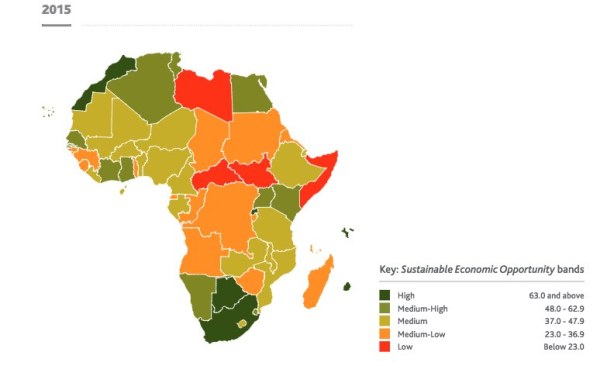With an eye on the Democratic Republic of Congo and South Sudan markets, there is renewed vibrancy on the Northern Corridor, as Uganda and Kenya join forces to push the rehabilitation and seamless connection of the old metre gauge railway line, over which the two countries’ officials met this week to thrash out operational details.
It is understood that Kenya, which is revamping its metre gauge railway line from Naivasha to Malaba, wants a reliable mode of transport for onward transit of cargo into the hinterland to make its logistics infrastructure operational, particularly the Naivasha inland container depot. Besides putting its logistics infrastructure to use, Kenya is also eyeing the $92.3 million Congolese market for its manufactured goods and is apparently keen to see a link with Uganda actualised in the shortest time possible.
“Kenya is interested in a seamless connection immediately,” said Stanley Sendegeya, Uganda Railways Corporation (URC) managing director.
On the sidelines of President Yoweri Museveni’s inauguration on May 12, Kenya’s Cabinet Secretary for Transport and Infrastructure James Macharia told The EastAfrican that he met his Uganda counterpart Gen Edward Katumba Wamala to discuss the metre gauge railway operations. The EastAfrican also understands that Chinese embassy officials attended the meeting.
This meeting was part of the concessions talks between China Roads and Bridge Corporation (CRBC) and URC to have the Chinese firm rehabilitate the Malaba-Kampala railway line.
“We came here to assist them conclude this deal. It has been done,” CS Macharia told The EastAfrican from Kampala. “The idea is to make sure we have a seamless operation of the metre gauge railway line from Naivasha all the way to Kampala.”
Kenya has contracted CRBC to rehabilitate the Longonot- Malaba line and the progress is good so far, said the minister.
“So we felt for it to make sense, Uganda had to also start doing the same for their line to make this project complete,” he added.
This new vibrancy reflects the two countries’ urgency to access and dominate markets beyond their borders after years of failure to build a Northern Corridor standard gauge railway (SGR) for Kenya, Uganda, Rwanda and South Sudan.
Signed in 2013 as part of the Northern Corridor Integration projects, the SGR has only been operational in Kenya from Mombasa to Nairobi since 2018, but is yet to take shape in Uganda, Rwanda and South Sudan.
“The Uganda agreement with the contractor is to have this done in the shortest time possible so as to ensure that we have the line working for business persons all the way to Kampala,” Mr Macharia said.
These developments coincided with the approval by Uganda’s Parliament of a $368.9 million loan to rehabilitate the metre gauge railway, which officials say once all components are fully revamped, would constitute a significant part of Uganda’s infrastructure diplomacy in the Great Lakes Region.
The loan involves a concessional loan of €28.9 million ($34.9 million) sourced from the Corporate Internationalization Fund of Spain, funding two projects running concurrently – a two-year project for construction of the railway, and a three-year capacity building project, starting this month.
Both projects are contracted to Spanish companies, with 30 percent local content, Mr Sendegeya said.
It is understood that the Chinese are also angling for a contract.
The other financiers are the African Development Bank, which will provide $233.2 million and the African Development Fund to provide $100.7 million – both concessional loans to finance construction and purchase of rolling stock, which includes locomotives, wagons and coaches.
“Our target is to move cargo from road to rail, and we expect to be moving 6 million tonnes a year. And once we do this, the costs will come down,” Mr Sendegeya explained, adding that transport costs will fall from 13 US cents to 5-7 US cents per net tonne kilometre.
In addition, transit cargo to DRC and Rwanda, currently moving by road, will shift to rail and free the roads and double their lifespan, Mr Sendegeya added.
In its efforts to revamp the metre gauge railway, Uganda is also reviving the route from Tororo in eastern Uganda to Gulu city in the north. The line is currently under construction. Significantly, the city also hosts the Gulu Logistics Hub, whose phase one is also under construction, and projected to be complete in March 2022. The hub – which will be rail-linked – was planned as a strategic location connecting to the growing markets of Congo and South Sudan.
Also in URC’s development plan is the revamp of the Kampala-Kasese line, which terminates near the Uganda-Congo border, and the Gulu-Pakwach line in northern Uganda, also planned to move cargo close to DRC border.
“In five years’ time, we want all these to be running,” Mr Sendegeya said.
In ground-breaking deals, the DRC, whose expansive eastern territory is reliant on the Northern Corridor for movement of goods, has agreed with Uganda and Kenya to deploy in joint security operations and road construction to guarantee ease of commerce and movement of goods.
DR Congo President Felix Tshisekedi, who was in Kampala for the inauguration of President Museveni, met with the Uganda leader and agreed on joint military operations in eastern Congo to guarantee security for the construction of three roads that are contracted to Dott Services, a Ugandan company.
Uganda is footing 20 percent of the total cost of these roads, and last week a Congolese delegation held discussions with their Ugandan counterparts, and are expected to sign an inter-governmental agreement “by close of next week,” according to a spokesperson of the Ministry of Works and Transport.
Biggest partners
The roads run from some of Uganda’s border towns into DRC, namely Kasindi to Beni (80km), integration of Beni-Butebo axis (54km), and the Bunagana-Rutshuru-Goma road (89km), with a total cost of $334.3 million, of which Uganda will contribute $65.9 million.
The DRC is one of Uganda’s biggest trading partners in the region, and is often fronted as an alternative market for Uganda since a civil war broke out in South Sudan in 2013 and later when Rwanda closed its common border with Uganda in early 2019.
Total exports for Uganda to Congo in 2018 stood at $532 million, of which informal trade exports were worth $312 million, while formal trade accounted for $221 million.
Kenya has also indicated that it will move its army into eastern Congo to secure the region, after President Uhuru Kenyatta’s visit to Kinshasa last month, where he signed bilateral security, trade maritime freight and transport deals with his host.
The maritime freight deal will see the Port of Mombasa grant certain privileges to the DRC for using Kenyan facilities, but also address delays in Congo-bound imports by dedicating clearing channels for goods headed there.
The 260km Malaba-Kampala line rehabilitation is expected to end in less than 12 months.
The signing of the deal seems to further derail Kampala’s plan to have an SGR line from the border to Kampala and possibly to Rwanda, even as it seeks to have faster evacuation of cargo from Mombasa.
In January this year, Kenya began the $35 million rehabilitation of the 460km Longonot to Malaba line, which it expects to be ready by the end of the year. Upon completion of repairs on the old line, it will then link to the SGR at Naivasha. This will enable seamless transport of cargo containers from Mombasa to Kisumu and Malaba border into Uganda.
Already, Kenya Railways is constructing a link line between the Naivasha ICD and the existing Longonot railway station, to ensure this interchange is successfully executed.
The 24.3km link will ensure cargo from the SGR moves to the MGR line at the interchange in Naivasha for onward movement to Kampala.
In May last year, President Museveni argued that increasingly cargo should be shifted from road to the railway, because of its low cost and the high maintenance costs of road networks due to the heavy toll by trucks.
Already, the National Enterprise Corporation, the commercial arm of the Ugandan military has undertaken bush clearing, screening and maintenance of two sections of Malaba-Kampala railway line totalling 100km.
Written by Julius Barigaba and Allan Olingo
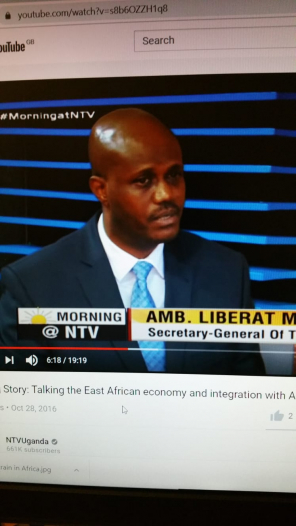 Ambassador Liberat Mfumukeko during the interview. Photo by Eddie Ssejjoba
Ambassador Liberat Mfumukeko during the interview. Photo by Eddie Ssejjoba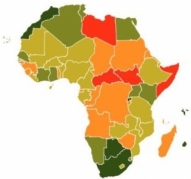
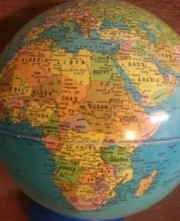

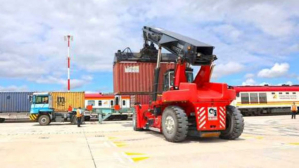 The inland container depot in Naivasha, Kenya, where an interchange linking the standard gauge and metre gauge railway lines is being developed to create a seamless passage of goods from the port of Mombasa to the Great Lakes region through Uganda. PHOTO/FILE/NMG
The inland container depot in Naivasha, Kenya, where an interchange linking the standard gauge and metre gauge railway lines is being developed to create a seamless passage of goods from the port of Mombasa to the Great Lakes region through Uganda. PHOTO/FILE/NMG